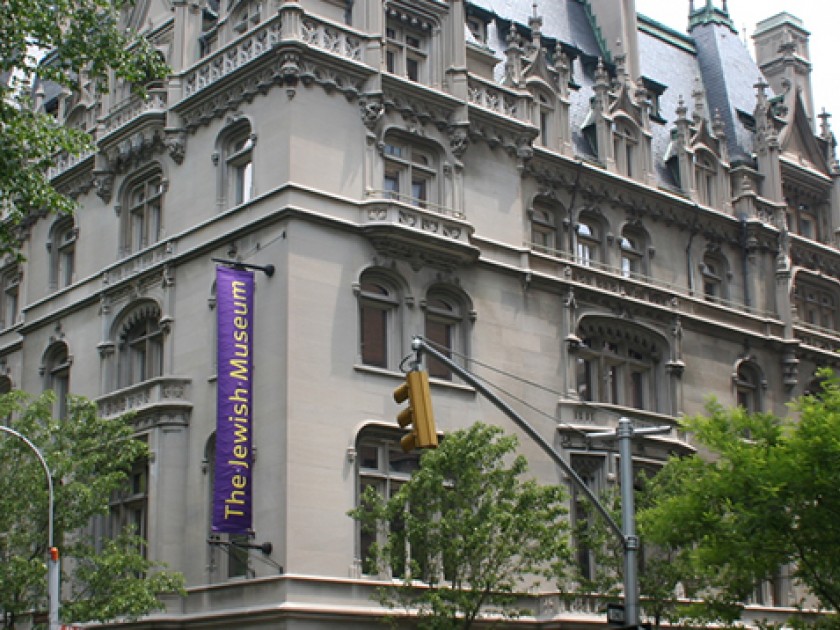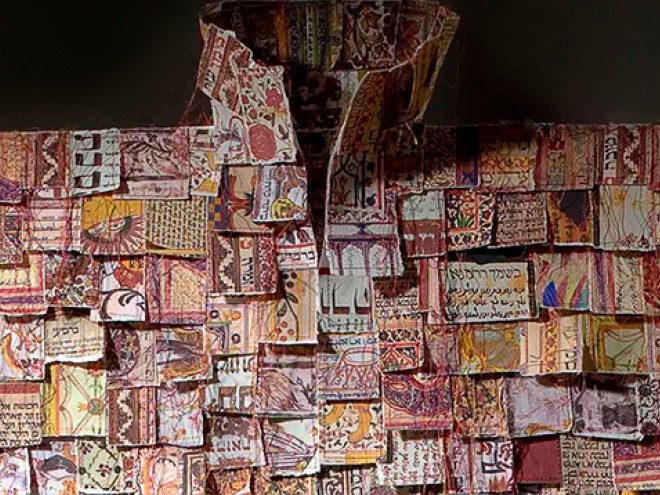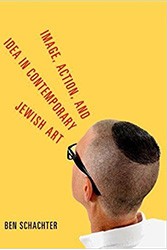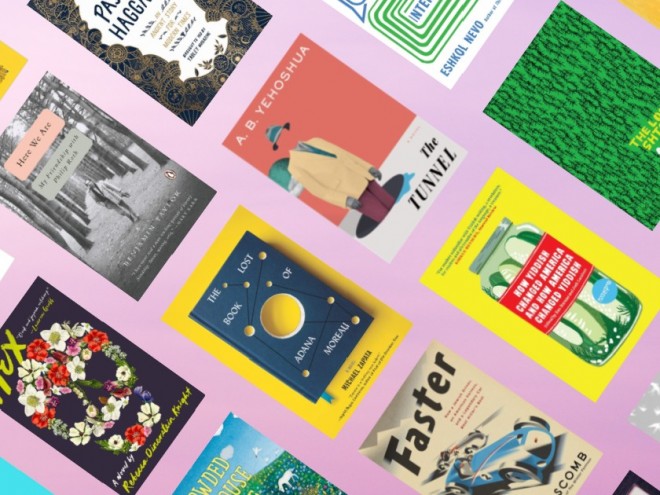
Ben Schachter is the author of Image, Action, and Idea in Contemporary Jewish Art, published in November by Penn State University Press. Earlier this week, he shared his five favorite Jewish artworks. He has been blogging here as part of JBC’s Visiting Scribe series.
About twenty years ago the Jewish Museum in New York proposed the following thought experiment: Can Jewish art be too Jewish for the Jewish Museum? Well, that depends on who you ask. And it was the Jewish Museum that was asking in 1996. The idea for the show arose when then head curator Norman Kleeblatt visited artist Archie Rand’s studio. Rand had been working on a series of paintings that he hoped would be embarrassingly Jewish. Each one illuminated a portion from the Torah. According to accounts in the exhibition catalog for the show, “Too Jewish?” Rand succeeded. Without stating it directly, yes, there is art that is too Jewish. But when I saw the show, I saw nothing of the sort. I saw something entirely different.
In 1996 I was a freshly minted Wesleyan University alumnus. I had grown up as an active and engaged reform Jew. I sang in the choir with my father and brother and went to high holiday services. It was important to me to be with family during those celebrations. I never even considered religious ambiguity (and really I still don’t).
Yet, walking into the Jewish Museum was like walking into a temple that I had never visited. I wasn’t sure what to expect or what was expected of me. Don’t get me wrong — I didn’t think of art as a religious experience, and I certainly knew how to carry myself in a museum. But for some reason, the Jewish Museum was different. I felt out of place. Was the Jewish Museum “too Jewish” for me?
That feeling quickly dissipated when I entered “Too Jewish?” I saw artworks tackling Jewish ideas and traditions with non-traditional materials and avant-garde techniques. At every turn, I was surprised: by casts of noses, erased text, monotonous counting of grains of rice. It felt more like a downtown gallery than the Jewish Museum. I wasn’t surprised to see Jews asking questions of their religion; what was surprising was how they formed the question — through contemporary art.
Much has changed in twenty years. The Contemporary Jewish Museum in California has expanded and the Jewish Museum programming has grown. The Yeshiva University Museum mounts important exhibitions on the eruv, books, and now has a show featuring a full-scale recreation of the relief from the Arch of Titus depicting the menorah being paraded by Roman legions. The relief in the exhibition was created using the latest cutting edge technology. And the most recent expression of contemporary Jewish art is shown every two years at the Jerusalem Biennale. I was fortunate enough to be part of the most recent exhibition. And even more, I’m glad to count myself as part of a growing and dynamic quest to discover what Jewish art will look like tomorrow.
Can Jewish art be too Jewish for a Jewish Museum? If so, then whatever that art might be isn’t really too Jewish at all; its avant-garde.
Ben Schachter is the author of Image, Action, and Idea in Contemporary Jewish Art(Penn State University Press). He is Professor of Fine Arts at Saint Vincent College. In the past, he received the Hadassah Brandeis research award. His artwork has been exhibited at Yale University, YU Museum, the Jewish Museum, the Westmoreland Museum of American Art, the Mattress Factory, and other venues. His writing on art and criticism has appeared in various art journals and books, includingDrawing in the 21st Century, edited by Elizabeth Pergam andIt’s A Thin Line, edited by Rabbi Adam Mintz. He lives in Pittsburgh with his wife and four children.



